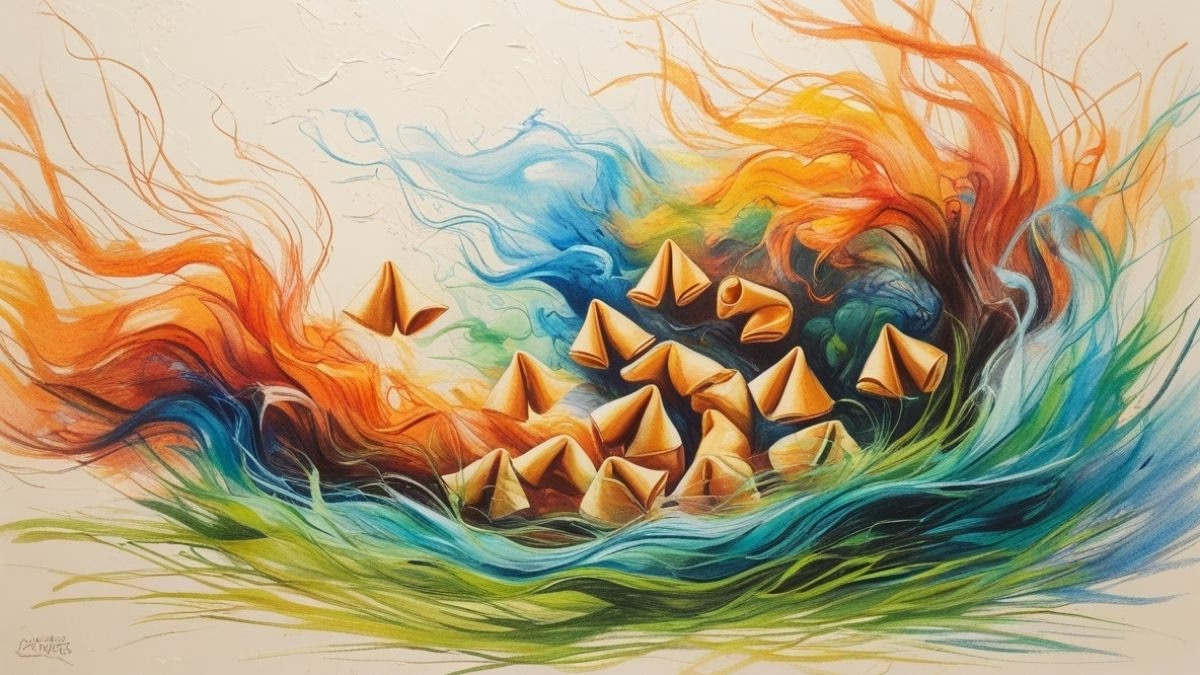Audio Episode
Introduction
There it is, at the end of a delicious meal in a Chinese restaurant: a crunchy, folded cookie with a little paper message tucked inside. We all know and love the fortune cookie. But what if I told you that almost everything you think you know about it is wrong?
This little cookie holds a giant secret, a surprising story that hops across continents and involves Japanese tradition, American ingenuity, and a major historical event that changed everything. This quiz isn’t about testing your memory; it’s a fun journey to uncover the true story behind one of the world’s most famous food myths.
By taking this quiz, you will:
- Uncover a Hidden History: Discover the fascinating, and very surprising, origins of the fortune cookie.
- Travel Through Time: Journey from 19th-century Japan to early 20th-century California to see how the cookie evolved.
- Learn in a Fun, Engaging Way: Pique your curiosity with questions designed to make you say, “Wow, I never knew that!”
- Impress Your Friends: You’ll be the one at the table who knows the real story next time you crack open a fortune cookie.
Are you ready to unfold the truth? Let’s get started!
Learning Quiz
This is a learning quiz from English Plus Podcast, in which, you will be able to learn from your mistakes as much as you will learn from the answers you get right because we have added feedback for every single option in the quiz, and to help you choose the right answer if you’re not sure, there are also hints for every single option for every question. So, there’s learning all around this quiz, you can hardly call it quiz anymore! It’s a learning quiz from English Plus Podcast.
Quiz Takeaways
Hello again! I hope you had fun with the quiz and were as surprised as I was when I first learned the true story of the fortune cookie. For decades, a delicious misconception has been served up after every meal in a Chinese restaurant: that this crunchy, prophetic treat comes from China. But as we’ve just discovered, the truth is a much more fascinating and tangled tale that involves three different countries, a tragic moment in history, and the brilliant entrepreneurial spirit of immigrant communities.
So, let’s solve the case of the curious cookie together.
Our story doesn’t begin in China at all. It starts in 19th-century Japan, specifically in the beautiful city of Kyoto. This is where we find the fortune cookie’s direct ancestor, a cracker called the “tsujiura senbei,” which translates to “fortune cracker.” These were traditionally sold at temples and shrines. If you were to travel back in time and try one, you’d be in for a surprise. They were larger, darker, and not very sweet. Instead of vanilla and butter, they were flavored with savory ingredients like miso and sesame.
But the most important similarity was the paper fortune, known in Japan as an “omikuji.” And here’s a key difference we saw in the quiz: in the Japanese original, the paper fortune wasn’t baked inside. It was neatly tucked into the cookie’s outside fold. This tradition of a paper fortune with a treat is the true seed of our modern cookie.
So, if the cookie’s ancestor is Japanese, how did it become the sweet, vanilla-flavored cookie we know today? For that, we have to travel across the Pacific to early 20th-century California. The Golden State, with its vibrant and growing Asian-American communities, was the perfect melting pot for this new invention to be born.
This is where our mystery gets two main suspects, with a friendly rivalry between two great cities that lasts to this day. The first, and the one most historians credit, is Makoto Hagiwara, a Japanese immigrant who designed and ran the famous Japanese Tea Garden in San Francisco’s Golden Gate Park. The story goes that around 1914, he began serving a modified, sweeter version of the tsujiura senbei, flavored with vanilla and butter, as a thank-you treat to visitors. He served them with tea, and they were an instant hit.
But about 400 miles south, in Los Angeles, another man had a claim. David Jung, founder of the Hong Kong Noodle Company, insisted that he invented the cookie around 1918, stuffing them with inspirational biblical scriptures to give hope to the poor. The debate became so famous that in 1983, a mock “Court of Historical Review” was held in San Francisco to settle the matter. After hearing all the evidence, the judge humorously ruled in favor of San Francisco’s Makoto Hagiwara, a verdict most food historians agree with.
So, the cookie was invented in America, by Japanese immigrants. This leads to the biggest question of all: how did it become so completely associated with Chinese restaurants?
The answer lies in a sad and pivotal moment in American history: World War II. After the attack on Pearl Harbor, over 120,000 Japanese Americans, including many of the bakers and business owners producing these cookies in California, were unjustly forced from their homes and businesses into internment camps. Their bakeries were shut down, and production of this niche cookie suddenly stopped.
This is where the story takes its most important turn. Resourceful and clever Chinese-American entrepreneurs saw a business opportunity. They knew the cookie was popular with the public, and with the original Japanese producers gone, they stepped in to fill the void. They started making their own versions of the cookie and began supplying them to a few local restaurants.
The final piece of the puzzle fell into place at the end of the war. Millions of American soldiers and sailors were returning home, many of whom had passed through or been stationed in California. They had encountered these fun little cookies at restaurants in San Francisco and Los Angeles and had grown to love them. When they got back to their hometowns in New York, Ohio, or Texas, they would go to their local Chinese restaurant and ask, “Where are those cookies with the fortunes inside?”
Chinese restaurant owners all over the country, being savvy businesspeople, listened to their customers. They saw a demand and an opportunity to provide a unique, memorable, and inexpensive treat to end the meal. They started ordering the cookies from the Chinese-American bakers in California, and soon, production exploded.
For decades, making the cookies was a slow, manual process. Workers had to fold the hot, pliable cookies by hand before they cooled and hardened, which was a difficult and often painful job. The final revolution came in the 1960s, when a San Francisco entrepreneur named Edward Louie, owner of the Lotus Fortune Cookie Company, invented the first automated fortune cookie machine that could fold the cookie and insert the fortune perfectly every time. This invention made mass production possible, and the cookie became the ubiquitous treat we know today, produced by the billions each year by companies like Wonton Food Inc. in Brooklyn, New York.
So, the case is closed. The fortune cookie is not Chinese. It’s a Japanese-inspired, American-invented food. Its incredible journey was shaped by immigration, a world war, and the entrepreneurial spirit that saw an opportunity to bring a little bit of joy and fun to the end of a meal. It has become a powerful and beloved symbol of the unique fusion culture of Chinese-American restaurants. And that’s a story even more satisfying than the fortune inside.










0 Comments